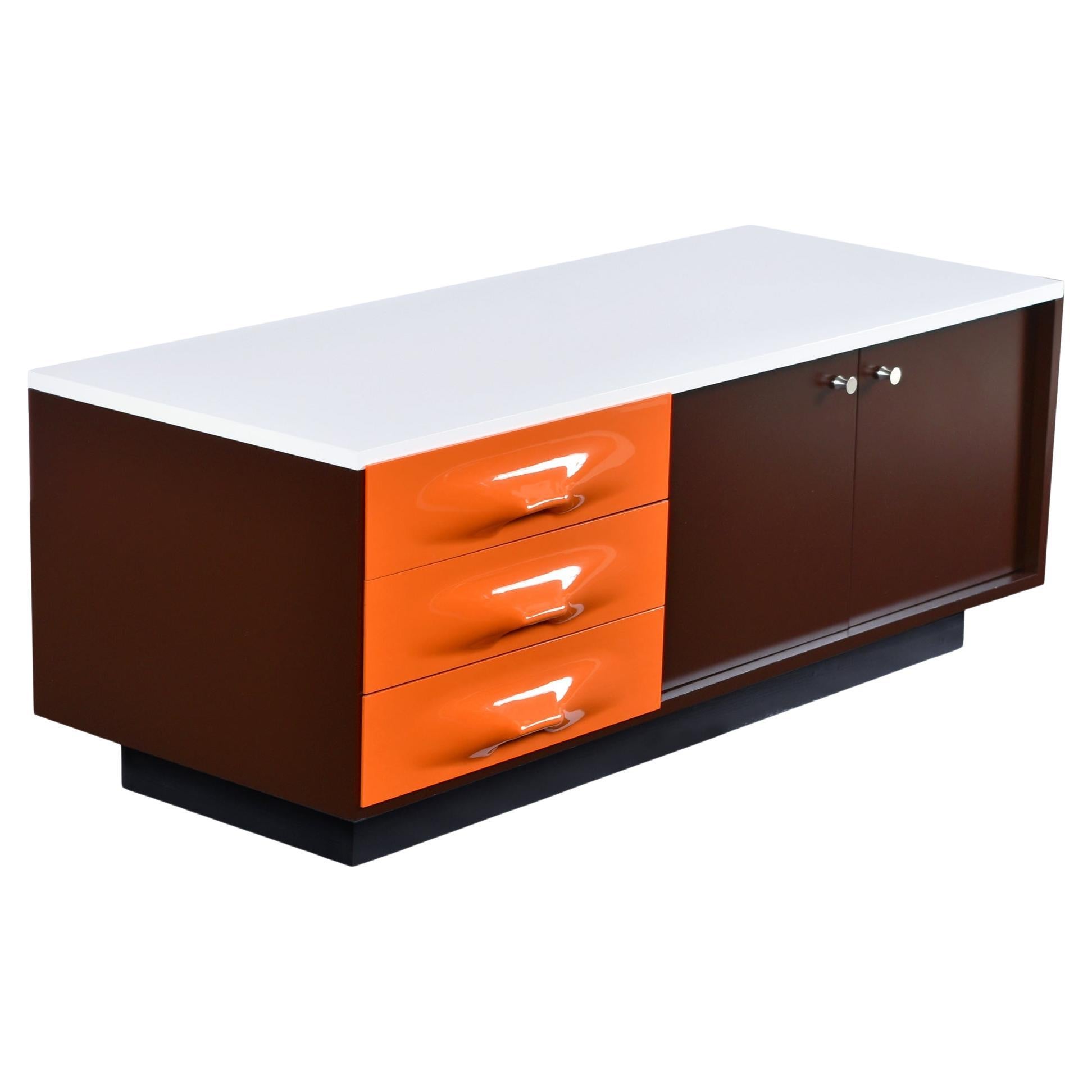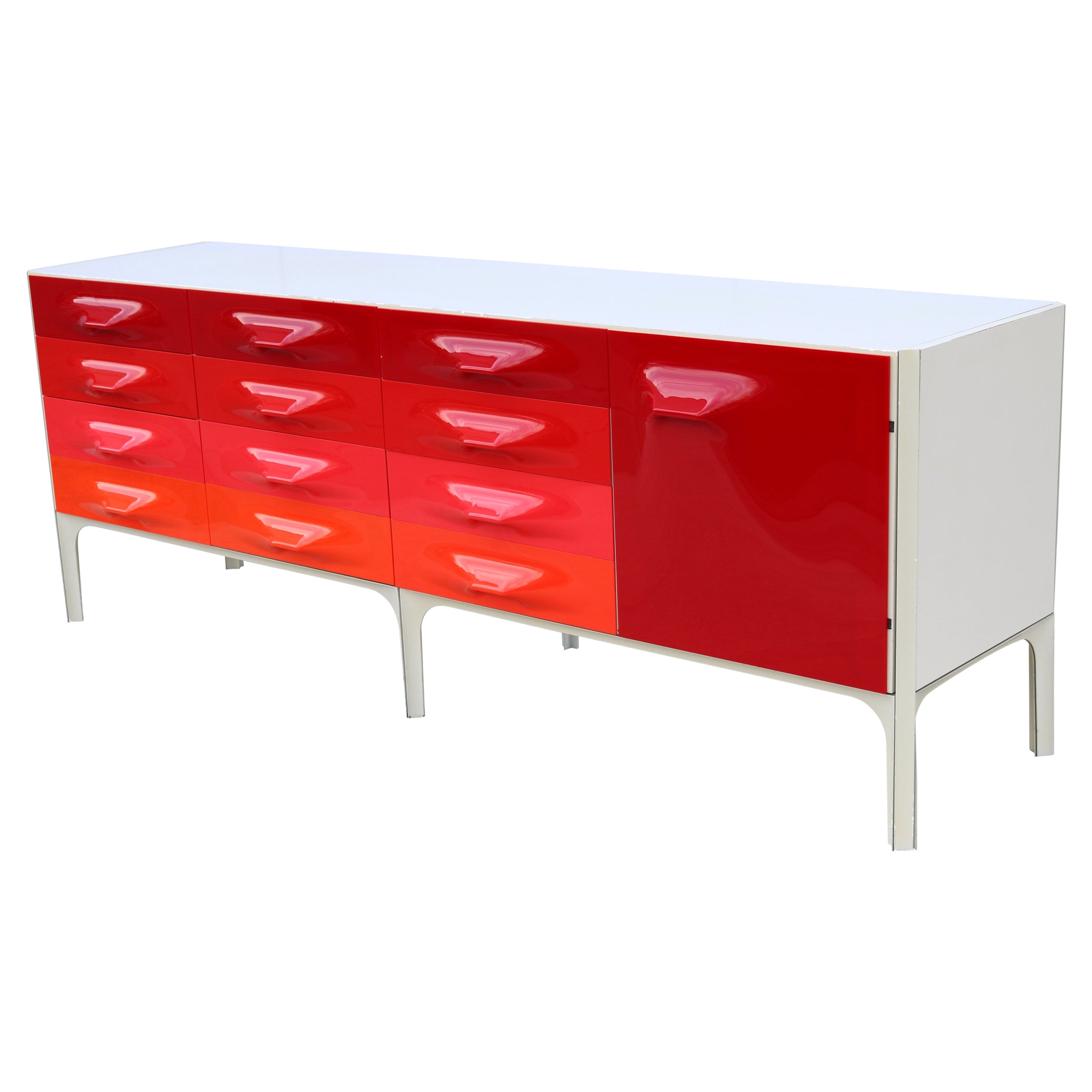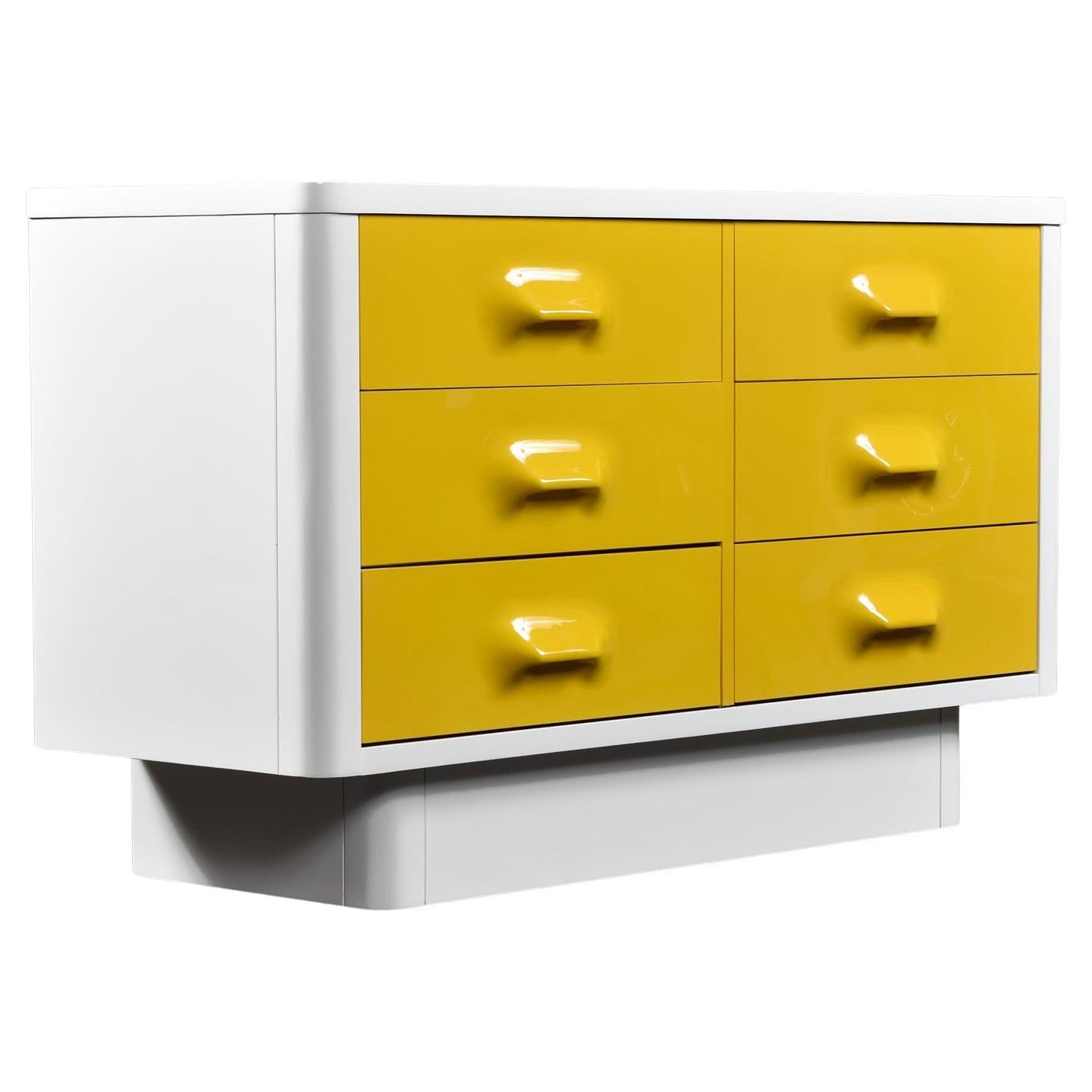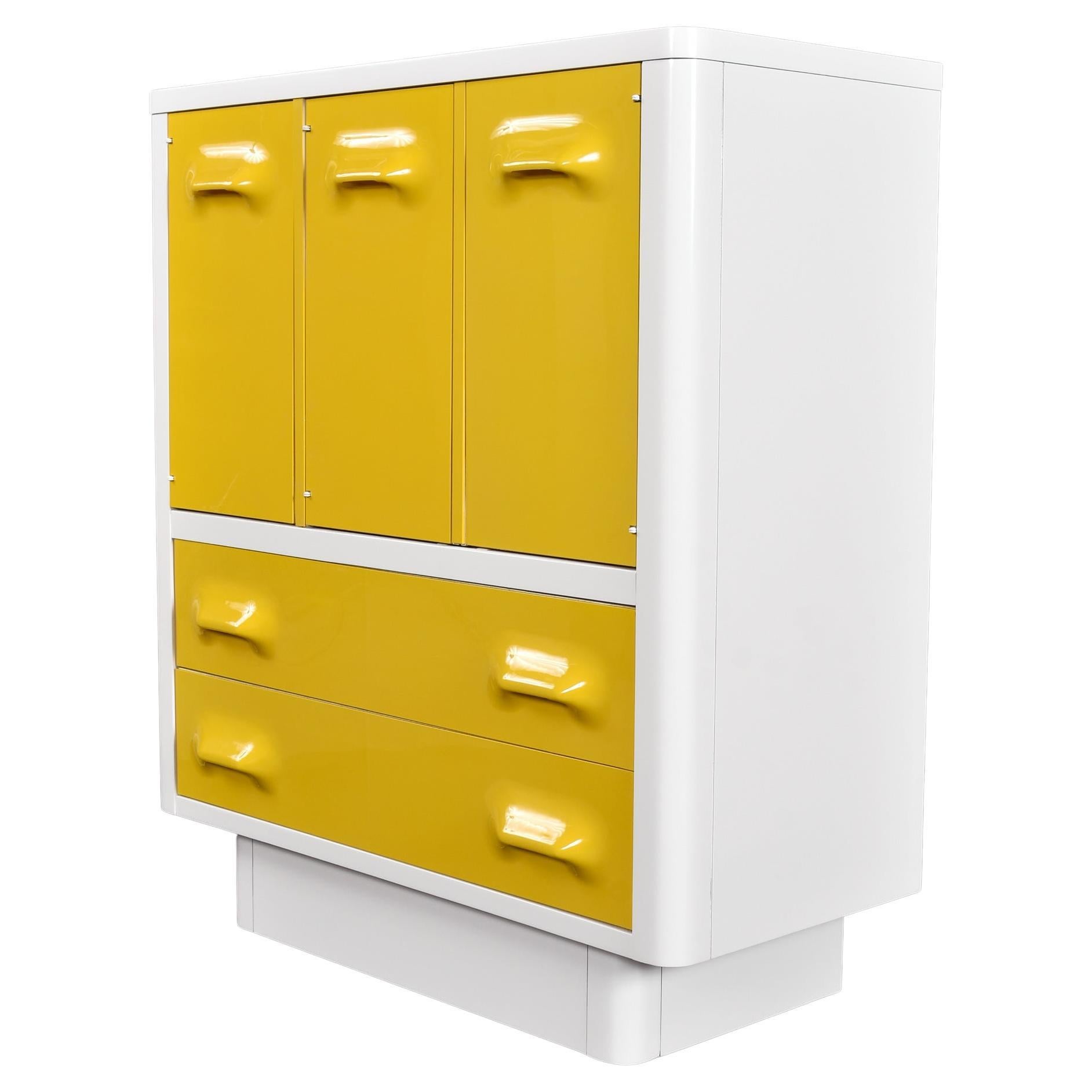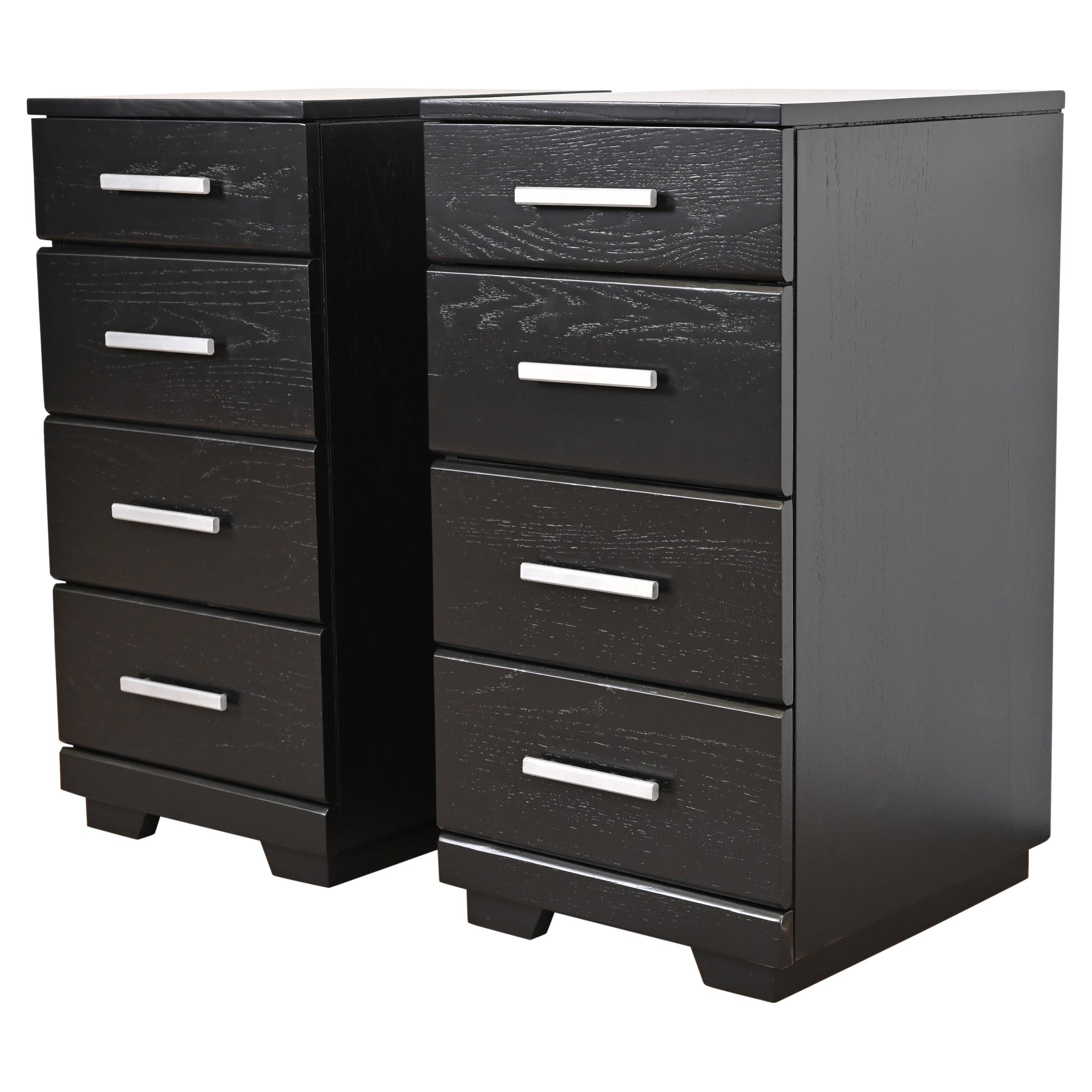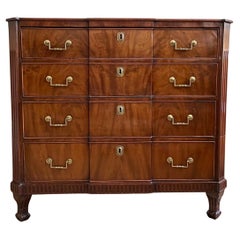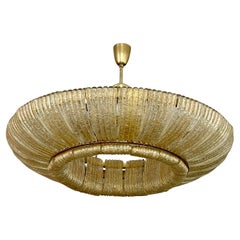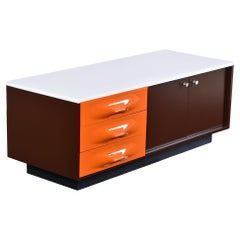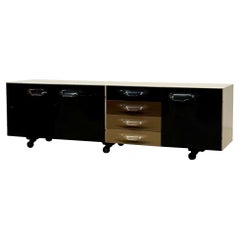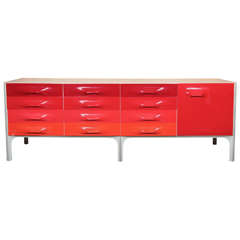
Raymond Loewy credenza
View Similar Items
Raymond Loewy credenza
About the Item
- Creator:Raymond Loewy (Designer)
- Dimensions:Height: 30 in (76.2 cm)Width: 80.5 in (204.47 cm)Depth: 19.75 in (50.17 cm)
- Style:Modern (Of the Period)
- Materials and Techniques:
- Place of Origin:
- Period:
- Date of Manufacture:circa 1970
- Condition:Wear consistent with age and use.
- Seller Location:New York, NY
- Reference Number:1stDibs: 1409091061417
Raymond Loewy
For those in the know, French-born American industrial designer Raymond Loewy is the “father of streamlining.” He is widely recognized as a pioneer of industrial design consulting — a creative powerhouse who took aim at cluttered designs and simplified them. Loewy left his mark on everything from toothbrushes to trashcans to spacecraft interiors. He designed cars, worked in illustration, and crafted comely dressers and other furniture.
Loewy was born in Paris, France. At age 15, he designed a model airplane that was powered by rubber bands. It won the James Gordon Bennett Cup of 1908. Loewy patented the model kit for this plane by the following year and saw brisk sales. With his savings, Loewy was able to study at the University of Paris and then at Ecole de Lanneau, where he earned an engineering degree in 1918.
Loewy moved to New York City in 1919 and found work as a window designer for the department stores Macy's, Wanamaker's and Saks and as a fashion illustrator for Vogue and Harper's Bazaar. Loewy’s big break in industrial design came in 1929 when he altered the Gestetner duplicating machine — removing jutting parts and encasing the moving works in an understated cover. It caused a sensation within the industry — and companies began to call on him.
Loewy designed packaging for Coca-Cola and revised the look of Lucky cigarettes. The “Loewy Look,” which referred to the designer’s efforts to strip a product of any unnecessary detail and streamline its appearance, began to characterize hundreds of products.
Loewy found clients in a dizzying number of companies. He did everything from retooling logos to redesigning products. His 1934 Sears Coldspot refrigerator was a sleek innovation that broke sales records. His Pennsylvania Railroad locomotive resembled a speeding bullet and was the darling of the 1939 World’s Fair. Loewy even reworked shapes for snacks at Nabisco. By the time World War II gathered steam, Raymond Loewy Associates — the industrial design firm he founded — had been operating in a number of American cities. When Time magazine featured him on the cover in October 1949 — Loewy was not shy about publicity — his profile soared.
Loewy worked with Studebaker for decades. The success of their 1953 Starliner coupe was due to his revolutionary design, while their 1963 futuristic, fiberglass-bodied Avanti, which came with advanced safety features and materialized at a time when the company was experiencing financial hardship, was his crowning achievement for the maker.
Returning to his roots in aviation, Loewy worked for NASA from 1967 to 1973 on the interior design of the Skylab space station. He was also involved in the interior designs of the Concorde supersonic jet and Air Force One. Loewy delighted in creating furniture and collaborated with manufacturers such as Mengel Furniture, Rosenthal and Doubinsky Frères. In the 1970s, Loewy and his wife shuttered their businesses and retired in France.
On 1stDibs, find vintage Raymond Loewy cabinets, serveware, seating and more.
- Pair of 18th-Century Italian Console TablesLocated in New York, NYThis pair of Italian Neo-Classical console tables were carved, painted battleship-grey, gilded, and topped with slabs of Carrara marble. Each has a carved cartouche — one with a pair...Category
Antique Late 18th Century Italian Neoclassical Credenzas
MaterialsMarble
$55,000 / set - Baltic Commode, Circa 1800Located in New York, NYThis mahogany commode has the fluted rails and canted corners typical of case furniture made along the coasts of the Baltic and North Seas around 1800. More difficult to pinpoint, however, is the exact place of its making, since this geographical region stretches from Germany to Russia, and north from Poland to Scandinavia. That said, a strikingly similar, if slightly plainer commode in a private German collection bears an old paper label that identifies it as having been made in the city of Altona. It also bears the seal of King Christian VII of Denmark who reigned until 1808. At the time, Altona was in the independent Duchy of Schleswig-Holstein, located between Denmark and Prussia. Both nations tried to annex the Duchy, and in 1848 it was ceded to Prussia, which became part of Germany in 1871. A North Sea port, Altona was a member of the Hanseatic League, an association of seaports that was established in the 14th century to foster trade and police the high seas. Around 1800, the aforementioned King Christian of Denmark, who was also the Duke of Schleswig-Holstein, allowed Jews to freely settle in Altona to increase the tax base. This allowed them to conduct business in neighboring Hamburg, a larger financial hub that maintained quotas. The prosperous Jewish families of Altona built villas there, and decorated them with furnishings that were made locally and imported. Many of those makers owned copies of furniture-pattern books, which were widely disseminated among these seaports, accounting for the difficulty in determining if a piece was made in Altona, Stockholm, or St. Petersburg. We can’t trace our commode to a Danish king or a known Altona merchant, but we can link it to the New World empire builders...Category
Antique Early 1800s German Neoclassical Commodes and Chests of Drawers
MaterialsBrass
$20,000 - 1930s Venini ChandelierBy VeniniLocated in New York, NYThis late 1930s Venini chandelier has two rings of curved-glass elements suspended from a brass frame. It appears to glow magically from within because the glass elements are infuse...Category
Vintage 1930s Italian Modern Chandeliers and Pendants
MaterialsBrass
$38,000 - 1920s Swedish Grace SculptureLocated in New York, NYThis abstract 1920s Swedish sculpture of painted-and-gilded plaster, on a painted-wood base, is pleasing from all angles. At the time and place where it...Category
Vintage 1920s Swedish Modern Abstract Sculptures
MaterialsPlaster, Wood
- Circa 1930 German Side TableBy Fritz August Breuhaus de Groot 1Located in New York, NYOur table was made of birch, solid and veneered, stained a rich brown, and topped off with a slab of Bohemian breccia marble. We date it to around 1928, and attribute the design to Fritz August Breuhaus de Groot, who coined the term Kultivierte Sachlichkeit (Cultured Objectivity) to describe his work, and distinguish it from the Neue Sachlichkeit (New Objectivity) practiced by his contemporaries Walter Gropius, Mies van der Rohe, and Lily Reich. The table bears a passing resemblance to a considerably simplified, marble-topped ovoid one that he designed for his 1934 Berlin living room. Breuhaus was a man on the make. The first of his three marriages was to the daughter of an industrialist, who financed the building of luxury villas and workers’ housing designed by his son-in-law. In 1929, Breuhaus, the son of a dentist, added “de Groot” to his name, falsely linking himself to a distinguished family of painters. By then, he’d been fudging his academic record for years. That didn’t prevent a teaching appointment at the State University of Bavaria, which allowed him to add the prestigious “Herr Professor” prefix to his name. Yet he never followed through on the teaching — he was far too busy designing more luxury villas (commissions he accepted only if he could furnish them as well), and products for his own company, which included furniture, textiles, wallpapers, lighting, and fine silver. In addition to designing aircraft interiors for Lufthansa, and pullman railroad...Category
Vintage 1920s German Modern Side Tables
MaterialsMarble
- 1930s Italian BenchBy Pier Luigi ColliLocated in New York, NYThis 1930s Italian bench is so over-scaled, and monumental in appearance, that it seems to have been made for the large room it was destined, rather than the comfort of a typical sitter. As such, it would function equally well as a low side table or a high cocktail table. We’ll allow the buyer to determine its use. The designer was Pierluigi Colli, and the fabricator Martinotti, the Turin furniture and interior decorating firm that was established in 1831, and exhibited at the 1876 Philadelphia Centennial Exhibition and the 1904 St Louis World’s Fair. Colli’s family owned a textile company that supplied Martinotti with upholstery fabrics, suggesting nepotism had something to do with his being hired as the firm's director in 1926. Nevertheless, he proved himself worthy as a designer and a businessman. Having studied in Paris at the Ecole des Arts Decoratifs, he befriended leading French designers, and arranged for Martinotti to retail Lalique glass and Jean Perzel lighting. In addition, the quality of their work, and Colli’s dedication to the modern design movement, prompted Carlo Mollino, Gio Ponti, and Gino Levi-Montalcini, among others, to have Martinotti fabricate some of their furniture. Colli’s claim to fame, however, is his own work as a designer, and his ability to master the vocabularies of every trend from Art Deco to midcentury modern. During the Great Depression, when nearly every nation floundered economically, fascist Italy...Category
Vintage 1930s Italian Modern Benches
MaterialsOther
$9,000
- Raymond Loewy DF-2000 Orange Plastic Drawer Media Cabinet CredenzaBy Raymond LoewyLocated in Chattanooga, TNThe restoration team pulled no punches on this authentic Raymond Loewy Media Cabinet Credenza, and the end result exceeded our expectations. Every inch of the wood doors and side pan...Category
Vintage 1970s French Space Age Credenzas
MaterialsChrome
- DF2000 Cabinet/Credenza by Raymond Loewy for Doubinsky FreresBy Doubinsky Freres, Raymond LoewyLocated in Chicago, ILc. 1960s. Made in France. Rare piece of design history with ABS plastics doors and drawers. Cabinet was modified to have casters on base. Could be wall mounted.Category
Vintage 1960s French Mid-Century Modern Credenzas
MaterialsPlastic
- Mid-Century Modern Raymond Loewy DF2000 Credenza or Dresser by Doubinsky FreresBy Raymond Loewy, Doubinsky FreresLocated in Secaucus, NJFabulous large version of the classic DF2000 credenza or dresser by Raymond Loewy. Featuring nine drawers and a cabinet, the molded plastic drawer fronts are organized in the designe...Category
Vintage 1960s French Mid-Century Modern Credenzas
MaterialsAluminum
- Raymond Loewy DF 2000 Chest Of Drawers Credenza For Doubinsky Frères, 1968By Raymond LoewyLocated in ABCOUDE, UTNice cabinet from the X-line series by renowned designer Raymond Loewy for Dubinsky Frères, France 1968. A space age icon featuring plastic, which was groundbreaking for its time. Th...Category
Vintage 1960s Commodes and Chests of Drawers
MaterialsMetal
- Mid Century Raymond Loewy Dresser ChestBy Mengel Furniture Co., Raymond LoewyLocated in San Jose, CAMid-century dresser chest designed by Raymond Loewy for Mengel Furniture Co. in ebonized solid oak. This piece features four wide drawers with cast aluminum pulls.Category
Vintage 1950s American Mid-Century Modern Commodes and Chests of Drawers
MaterialsAluminum
$1,920 Sale Price20% Off - Raymond Loewy DF-2000 Valet, FranceBy Doubinsky Freres, Raymond LoewyLocated in Mouscron, WHTRaymond Loewy DF-2000 valet, France.Category
Vintage 1960s French Mid-Century Modern Commodes and Chests of Drawers
MaterialsMirror, Plastic, Laminate, Wood
